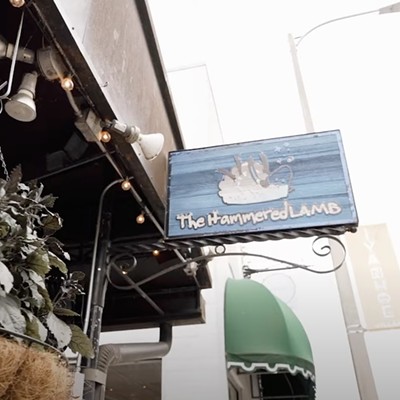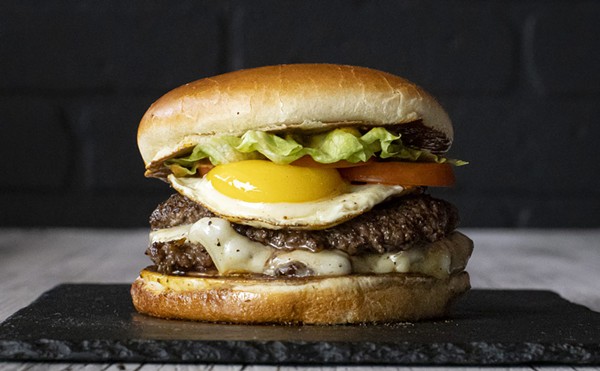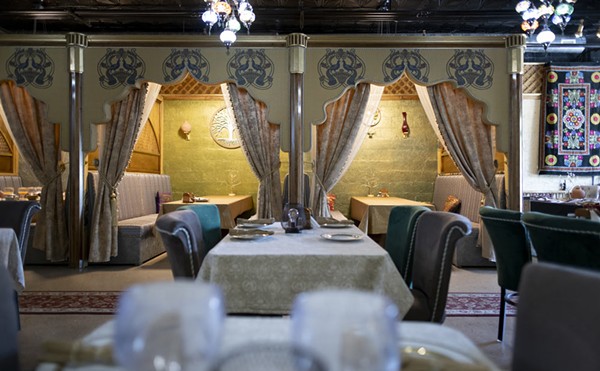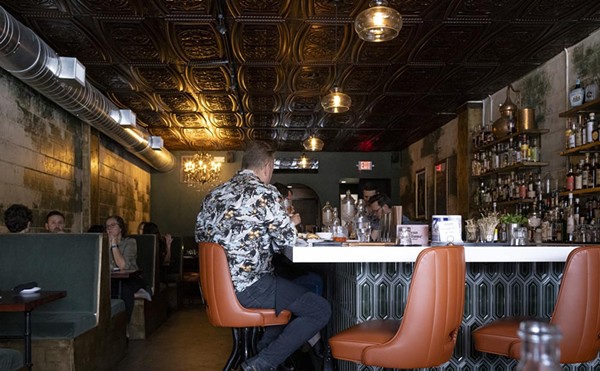I admit squeezing wine from a spigot doesn't scream sexy. Bag-in-box wines have no romance, no foreplay and, historically, no flavor. But for the couch, party or beach, or when you just want one glass, they're sensible and smart. Quality has persistently improved since the 1970s key-party days, and the simplicity of box wine (aka "cask wine") jives with our resource-strapped age — cork remains expensive, glass costs more to recycle than produce, and shipping heavy bottles saps loads of oil.
Welcome to the future of wine packaging — the cask.
According to Wikipedia, the cask was invented in Australia in the mid-'60s, where it's also affectionately called "Château Cardboard." The small, boxy encasement houses a heavy plastic bladder filled with wine and equipped with a pour spout that doesn't allow damaging oxygen to enter. The bag collapses as you draw wine out, so once opened, it stays fresh for up to six weeks, compared with the four or five days associated with corks (and screwtops). Several "official" tastings have confirmed the lasting freshness claim, and I also had a tapped box of California zinfandel ("Le Cask," available online) on my kitchen counter for about three months. It stayed tasty up until we drained it one late, drunken night. OK, maybe I can't swear to the freshness that last day.
But storage isn't the best feature of the boxes. The 3-liter pouch, which houses four bottles of wine and appeals to the most parsimonious of people, sells for approximately $20. Why? The wine costs up to 50 percent less to package and ship, so the savings are passed on to the consumer.
According to reports, Australia already drinks half of its wine from cask, and the Norwegians, Swedes and even the French deign to drink from a spigot. But we Yanks are catching on. Nielsen reports that premium 3-liter wine casks reflect the highest wine segment increases, with 36 percent annual volume growth. The only negative is shelf life — untapped wine doesn't keep as long as bottled, leading some producers, like Fish Eye, to list expiration dates.
For now, I probably won't be bringing a cask to my boss's house for dinner, but for anything involving a crowd or for everyday table drinking, when you might not want to finish off a whole bottle, the box performs brilliantly. It might be a tough transition, but take this pariah by the neck and squeeze. Something good will come out — fresh wine, every time.
RECOMMENDED CASKS
In my experience, boxed reds far outshone the whites in quality. I conducted a blind tasting with a group of novice-to-expert tasters, pouring the wines into decanters to prevent marketing spoilage. A wave of incredulity washed over them; then they rejoiced.
Hardy's 2007 Cabernet Sauvignon
Southeast Australia
Smells like fresh fruit, rather than chemicals, with bright raspberries, blueberries, black cherry, earthy leather and coffee flavors. Refreshing acidity on the finish. Well-structured and by far the crowd favorite. Sw = 1
$15 for 3-liter cask

Black Box 2006 Merlot
California
Deliciously fruity aroma. Has more going on than the others. Soft yet full-bodied, with tart red cherry, warm vanilla, black pepper and a slightly earthy swagger. Sw = 2
$19 for 3 liters

Trove 2005 Cabernet
California
Fruity, peppery smell. Tastes of stewed red fruit, black tea and flowers but had an old wine flavor. Sw = 1
$15 for 3 liters

Hardy's 2007 Shiraz
Southeast Australia
Fruit-bomb blackberry, red cherry with a touch of bacon and tobacco. Odd, chemical finish. Sw = 3
$15 for 3 liters

Black Box 2006 Pinot Grigio Veneto
Simple, summery white. Tastes like peach and lemon-flavored water. Sw = 3
$19 for 3 liters

Didn't make the cut: Fish Eye 2006 Shiraz, Wine Cube Pinot Grigio, Wine Cube Cabernet-Shiraz, Washington Hills 2005 Merlot, Banrock Station 2007 Cabernet Sauvignon, Bota Box 2005 Cabernet Sauvignon, Bota Box 2006 Pinot Grigio
Sweetness (Sw) rating is out of 10, 10 being pure sugar. Star ( ) rating is out of five, five being wine nirvana.
) rating is out of five, five being wine nirvana.


















